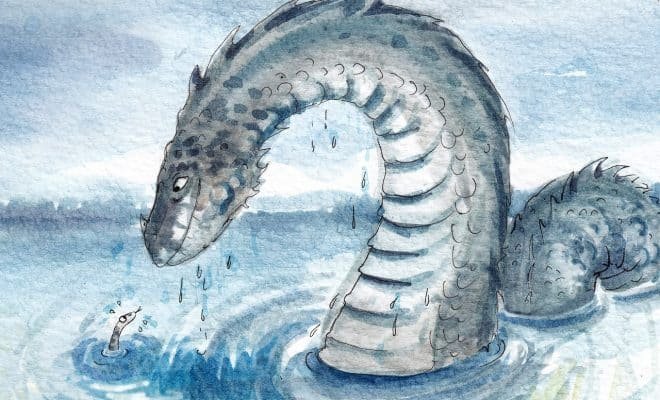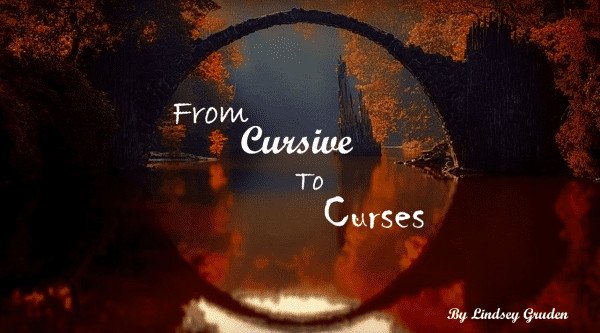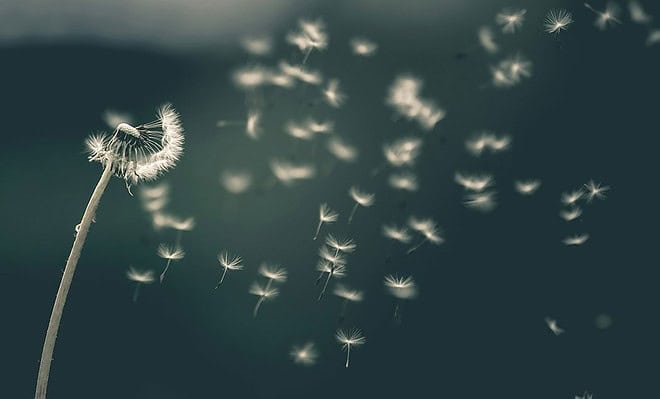New York’s ‘Champ’

New York has two fascinating lake monsters worth writing about. I only have time this week to write about one, so I will be writing about ‘Champ.’ Champ haunts Lake Chaplain in upper New York. He shares similar characteristics with Nessie of Loch Ness monster fame. Like the Highlands of Scotland, the cities and towns of the Lake Champlain area adopted Champ. They have Champ festivals and have integrated him as part of their tourist attractions.
Is Champ real?
Scientific investigations have been done on old Champ to answer that question, but there have been hundreds of personal sightings as well.
The Abenaki and Iroquois nations who lived in the area have legends of a lake monster. According to stories told around campfires, the large monster looks like a giant horned serpent or snake. This isn’t the first serpent-like monster reported in the United States. Georgia has their own Loch Ness monster that has been described as a giant horned serpent or snake. It makes you wonder how many more states have a Loch Ness monster themselves?
The early French settlers ignored the Abenaki warnings about the giant monster in the Lake they call Gitaskog. Samuel de Champlain, an early French settler, discovered Lake Champlain. in the 1800s. Early records give him credit for the first sighting of Champ. Except, facts show, he saw something at the Saint Lawrence River, not Lake Champlain. Lake Champlain is unique in the fact, it lies in both the United States and Canada. The Chambly canal connects Lake Champlain to the Richelieu and St. Lawrence rivers to the north. One has to travel from Lake Champlain through the Chambly canal to get to the St. Lawrence river.
He describes what he saw as a Chaousarou type fish with a two-foot-long snout. The Chaousarou is native to New York and comes in various sizes. They have a double row of teeth of dangerously sharp teeth and a body shaped like a Pike fish. Scales of a silvery gray color protect its body.
Historians think Champ is a garfish, a family of fish that includes the Lake Sturgeon. These fish grow up to 8 to 10 feet. That is a good size monster. Champ’s description is similar to that of Scotland’s Nessie and, in fact, is thought to be Nessie’s cousin. Except, witnesses report Nessie as being much larger than Champ.
Suppose you read Captain Crum’s story printed in the Plattsburgh Republican newspaper published on July 24, 1819. Crum was on a scow, which is a flat-bottomed boat and on the Bulwagga Bay. when he reported seeing a black monster. A monster 187 feet long with a head similar to a sea horse. It reared 15 feet out of the water and had a white star on its forehead.
Now, this description matches the description of Nessie, more so than the one Champlain gave.
Champ made another appearance in 1837 when a railroad crew saw Champ’s head in the lake. It looked like an enormous serpent’s head and covered silvery scales. July of the same year, Clinton County Sheriff Nathan H. Mooney spotted Champ in the lake. He reports seeing a giant snake 25 to 35 feet long. This critter is much smaller than the monster the good captain saw.
Is it the same creature? Not unless it is a baby of the enormous snake Crum spotted. In August, the steamship W.B. Eddy ran into what he swears was Champ. The tourists claim that the ship almost turned over after ramming it.
That had to have been a pretty good size creature to have the ship almost turn over.
P.t. Barnum took advantage of the hype and offered $50,000 in 1873 for Champs hide. Barnum wanted to add the great serpent to his mammoth World’s Fair Show.
I have to admit that I would love to see Champ in real life myself, but not dead.
Another steamboat, S.S. Ticonderoga, had a sighting of Champ in 1945. Her passengers swear it was Champ. Champ got more popular in the 1900s, with sightings reaching 180. Over 600 people have claimed to see Champ all over the lake. People were thrilled to ferry across the lake, hoping to catch a glimpse of the infamous Champ.
The 21st century introduced more sightings of the watery monster. There were enough sightings to inspire episodes on the Today’s Show, NBC’s Unsolved Mysteries, and Fox Network’s Sightings.
In 2003, the Discovery Channel did a special on “America’s Loch Ness Monster.” Champ’s popularity has increased to where stories of Champ appear in Discover magazine and scholarly journals.
There are still a lot of skeptics about whether or not Champ is real. The authorities have passed laws to protect Champ on both sides of Lake Champlain. They even have a Champ statue in the water in Port Henry, NY. Vermont has a baseball team known as the lake monsters, with Champ as their mascot.
Whether or not you believe Champ exists, there are way too many sightings to ignore. One thing for sure, Champ hasn’t hurt anyone and doesn’t appear to be going anywhere.
If you are on Lake Champlain, keep an eye on the water. You might see Champ out on there on the seas one day.
The selected image is by Pixabay.









